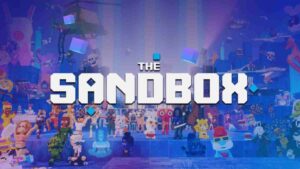Chainers is trying something different in the saturated world of Web3 games. Built around a colorful, voxel-style aesthetic and played entirely in-browser, the project leans into low-stakes creativity and social features rather than complex DeFi mechanics or hyper-competitive gameplay.
The goal is to offer an accessible space where players can build, collect, and trade without overwhelming them with crypto jargon or steep learning curves. It’s part of a broader shift in Web3 toward usability and entertainment first, speculation second.
Customizable avatars and a focus on digital identity
At the center of the experience is the “Chainer” itself: a stylized, animated NFT avatar that serves as your in-world identity. These characters aren’t just static collectibles. They can be upgraded, dressed, and animated, with assets unlocked through gameplay and community events.
Instead of focusing on rarity alone, Chainers encourages personalization. The system favors expression over speculation, which sets it apart from earlier NFT avatar projects that leaned heavily on scarcity models. This helps keep the community engagement loop focused on creation rather than flipping.
A modular metaverse that runs in-browser
One of Chainers’ more distinctive choices is staying browser-native. There’s no need for high-end hardware or downloads. That design choice keeps the barrier to entry low and makes the platform feel more like an evolving digital world than a traditional game client.
The world itself is structured around land ownership, item crafting, and themed events. Players can decorate their space, host activities, or just hang out with others. It’s part social hub, part creative sandbox more in line with Habbo Hotel or Club Penguin than the competitive edges of The Sandbox or Decentraland.
Blockchain use tied to assets, not mechanics
This is still very much a Web3 title. Items, avatars, and land parcels are all tokenized, and the economy allows players to trade or earn by participating. But the blockchain layer is handled quietly in the background. Wallet connection is there, but the onboarding process emphasizes gameplay first.
That balance is crucial. Chainers isn’t about earning first and fun later. Instead, it’s trying to create a system where players engage for the content, and blockchain simply supports that system with ownership and portability.
Events and community shape the roadmap
The game’s direction is heavily influenced by community feedback. Seasonal events, limited edition drops, and user-created content have already begun shaping the visual and social landscape. Developers seem focused on iterative releases, adding features based on how users actually play and interact.
This responsive model echoes successful live service games, but with the added layer of asset ownership and peer-to-peer economy. It’s an experiment in how flexible a Web3 world can be without turning into a grindfest or speculative market.
A quieter approach to play-to-earn
Chainers doesn’t push tokenomics front and center. There’s a currency, and it can be earned, but it’s not the reason to log in. This positions the game closer to a casual social sim than a typical blockchain farming loop. And that might be its real edge: making a Web3 game that feels like a place you want to be, not a system you have to game.
Web3 Analyst & Play Blockchain Games Guide
CryptoKit breaks down Web3 gaming like it’s second nature. From tokenomics to airdrop strategies, she turns blockchain chaos into clear, actionable advice for players who want to win more than XP.




